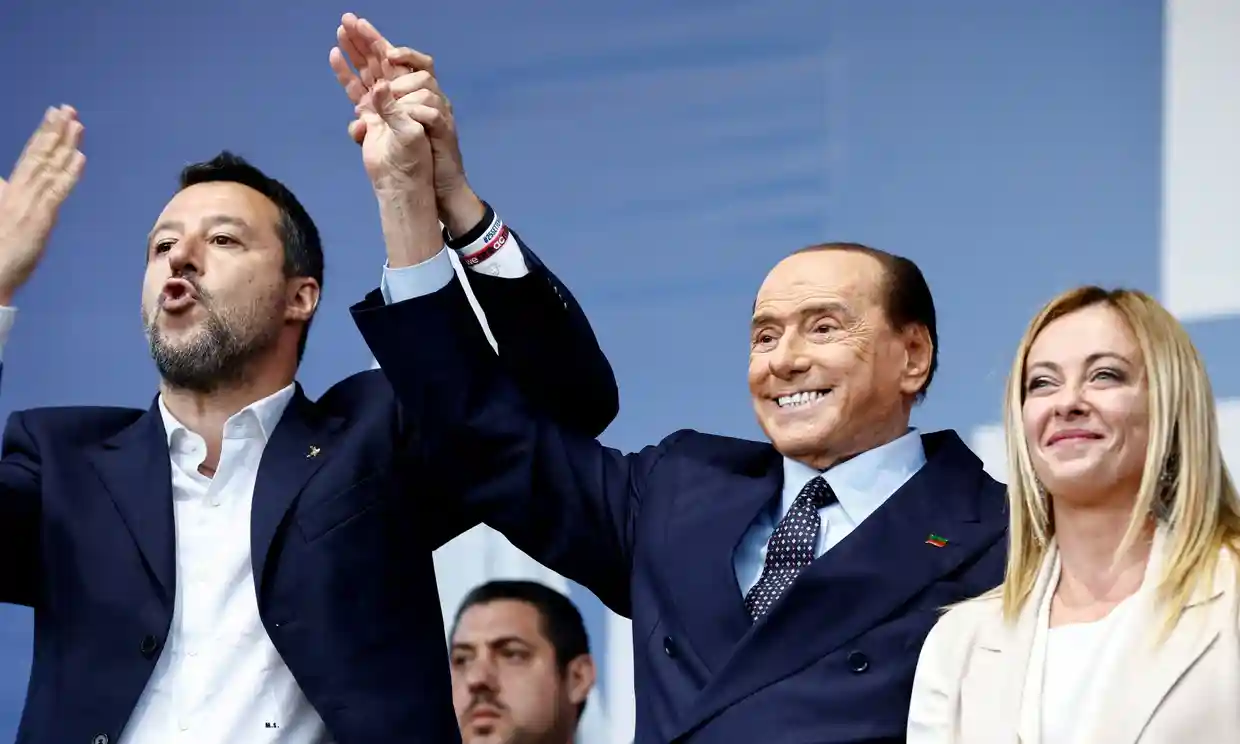By Bruno Marino (LUISS, Rome)
The result of the 2022 Italian general election was substantially in line with pre-electoral expectations and polls: a clear victory for the right-wing coalition [1] led by Fratelli d’Italia (FdI, Brothers of Italy), led by Giorgia Meloni and also made by Matteo Salvini’s Lega (League) and Silvio Berlusconi’s Forza Italia (FI) (plus a fourth small list, Noi Moderati – Us Moderates), and a defeat for the Partito Democratico (PD, Democratic Party) and its leader, Enrico Letta.
Nonetheless, some parts of this general election were surprising even for pundits, politicians, and citizens at large: the decline in the turnout; the new electoral geography and electoral strength for centre-left and populist parties; and the governing coalition that will likely support the new government led by Giorgia Meloni.
A first point of discussion is surely the turnout decline: while, in the past decades, more than 90% of Italian citizens eligible to vote went to the polls, data tell us that, in the 2022 Italian general election, there was the lowest turnout ever in a general election since the foundation of the Republic. Moreover, such a decline was not homogeneously distributed, with Southern Italian regions having the lowest turnout percentages.
A second point is the new electoral geography of Italian politics. First, if we look at some maps on the most voted party at the provincial level (taken from here), we notice a clear divide between the North and Centre –where, overall, FDI is the strongest party – and the South – where, instead, it is the Movimento Cinque Stelle (M5S, Five-Star Movement) to be the first party in almost all the provinces. The exceptions of some provinces in Emilia-Romagna and Tuscany shall be pinpointed: here, it is the PD to be the most voted party. These areas are the remnants of the Zona Rossa (Red Zone) where left-wing culture and parties dominated the social and political scene.
Nonetheless, given electoral system in place for these general elections, it is much useful to look at some maps on the most voted coalition in each province, and especially the most voted coalition in each first-past-the-post constituency for the Italian Lower House. Despite some differences, due to the fact that provinces do not correspond to FPTP constituencies, the picture is crystal clear: almost everywhere, the right-wing coalition is the most voted one. This makes even more evident the historical victory of the FdI-led coalition.
Then, what about the geographical distribution of party support? The map related to FdI tells us that its footholds are located in Lazio (less in Rome and more in the areas surrounding the capital of Italy) and in the Centre and North, such as some provinces in Lombardy and Veneto, including areas where, in the past elections and decades, it was the (Northern) League to have a strong electoral support. Conversely, in Southern Italy, the percentage of votes for Giorgia Meloni’s party is much lower. Then, the map for the League returns an image of a party with strong roots in Northern regions (Lombardy, Veneto, and Piedmont). Instead, the PD map shows that the provinces where it received the highest support (in percentage points) are the provinces belonging to the former Red Zone (see above) (e.g., in Emilia-Romagna and Tuscany) but also in the centre of some cities such as Turin, Milan, and Rome. Finally, the map showing the distribution of the electoral support for the M5S is much more different: the party led by Giuseppe Conte has its strongholds in Southern Italy, especially in Campania but also in Calabria, Sicily, Apulia, and Sardinia. The ‘Southernization’ of the M5S is nothing but new (as it was already evident after the 2018 Italian general election), but it is worth mentioning.
Moving to a higher level, the 2022 Italian general election have returned some interesting results: as for the centre-left bloc it was a catastrophic result and it was also the worst electoral performance of left parties if we consider the last general election held in 20 countries in Western Europe. Naturally, the situation were different if we considered the M5S as belonging to the centre-left bloc. Conversely, for populist parties the situation is totally different: the sum of the support obtained by FdI, League, and the M5S is among the highest ever registered for populist parties since 2010.
The third – and final – talking point is related to the government emerging after this general election. It is now certain that the right-wing electoral coalition will be able to form a government having the support of the absolute majority of both Houses of the Italian parliament. This is an important aspect to underline, given that just four years ago, after the 2018 Italian general election, the situation was much different. Moreover, each of the three big components of the coalition (FdI, League, and FI) shall be part of the coalition supporting the government to let it have an absolute majority in the Italian Parliament. This means that the power of each of these three actors, starting with government formation up to the law-making process shall not be underestimated. Nonetheless, the right-wing coalition will not be able to pass a constitutional reform on its own. Despite some were fearing the formation of a ‘super-majority’ able to amend the Italian Constitution without consulting the opposition and also without passing through a confirmatory referendum, the government likely led by Giorgia Meloni will not have such a wide majority.
[1] Following other scholars based on ParlGov data, I have considered FdI and League as right-wing parties. As a consequence, the coalition made by FdI, League, and FI can be considered as right-wing.
Photo source: https://www.theguardian.com/world/2022/sep/23/italian-rightwing-coalition-makes-final-push-before-election


